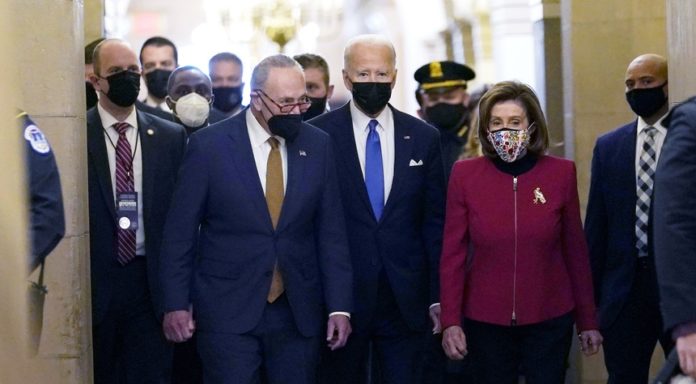The Democrats are currently riding high, at least in their minds. The Senate approved the Manchin-led reconciliation agreement on Sunday. It spent hundreds of billions of money on “climate” provisions. This included subsidies for the well-off to purchase solar panels and electric cars. Another part of the bill included a substantial tax increase for middle-class people.
Even Bernie Sanders acknowledges it’s bogus that the bill is called the “Inflation Reduction Act”. Democrats celebrated, calling it a major achievement that will lead to their victory in the midterms. Combine that with the recent increase in generic ballots for Joe Biden’s party and it is easy to see why left-leaning members are almost thrilled at how the past week has gone. They believe they can defy historical trends.
As I recently explained, much of the election-bro Twitter pushes is a mirage. The August polling results are notoriously inexact compared to the final election results. Democrats also have a history with mid-summer bumps. In 2014, for example, the Republicans did not take the lead in the generic ballot until October. They won the midterm vote by more than five points.
My article also contained numbers regarding Senate polling between 2018 and 2020. These numbers showed that the Republican vote share in 14 of the 15 toss-up races between the two elections was underestimated in many cases, often by a significant amount.
Another data point to consider along these lines.
Generic Congressional Ballot RCP polling Averages on August 7:
2014: Dems +1.6
2014 Actual Result: GOP +5.72020: Dems +8.8
Actual Result: Dems +3.12022: GOP +0.1
Pollsters Overstated Democratic support in 2014 by 7.3 points and by 5.7 points in 2020 in EARLY polling
— InteractivePolls (@IAPolls2022) August 7, 2022
One thing to keep in mind is that the polling aggregate for generic ballots still leads Republicans, despite all of the celebrations. A further problem is that Democrats are being supported by only three registered voter polls. These are highly doubtful given the likelihood that voters will favor the GOP once they have been applied. It is evident that polling has a problem underestimating Republican support, particularly in mid-term elections. It is not possible to conclude that the issue has been resolved until pollsters have produced accurate results. We won’t know that data until after Election Day.
There are also the basics to be aware of. The environment is difficult for Democrats, and inflation is on the rise. History is also something we should consider. It shows that the party of a first-term president almost always loses in the midterms. George W. Bush was the exception. However, he was on a unique bump after 9/11. Biden’s situation is different.
This brings me to enthusiasm and turnout. The primaries show how committed a party is to the mid-terms. All signs point towards a red wave.
NEW JERSEY:
2020 Pres. election: Biden (D) +15.9
2021 Gov. election: Murphy (D) +3.2VIRGINIA
2020 Pres. election: Biden (D) +10
2021 Gov. election: Youngkin (R) +1.9PRIMARY TURNOUT
2018: Democrats +6
2022: Republicans+6 (36 states)Average swing towards GOP: +12.2%
— InteractivePolls (@IAPolls2022) August 7, 2022
Contrary to the polling media loves to obsess about, real-world data sets are sending out a consistent message: Republicans will dominate the turnout game. This means that generic ballot polling is less useful than ever, especially when most are still using samples showing a Democrat advantage in turnout. There is no evidence of a November election, and the GOP has been energized in ways it hasn’t seen since 2016.
In one of the most difficult political environments for decades, Democrats will defy every historical precedent. It’s not my belief. Hopium is a popular topic right now. However, it is based on the belief that things will be “different” this time around due to “reasons.” I don’t believe so.




